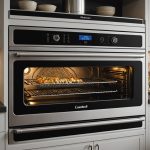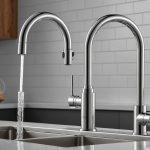Installing a commercial espresso machine in your small café can elevate your business and attract coffee enthusiasts. Yet, the process can be daunting without proper guidance. This quick guide breaks down the essential tips you need for a seamless installation. From choosing the right location to understanding power requirements, each aspect is critical to ensuring your machine operates perfectly. Get ready to transform your café into a coffee haven—your customers will thank you!
Preparation for Installation
Ensuring your café is ready for a seamless installation process.
Additional reading : Designing the Ultimate High-Volume Bar: The Optimal Layout for Cocktail Preparation Success
Assessing the Café Space for Machine Fit
Before installing a commercial espresso machine, it's crucial to evaluate the available space. Measure the dimensions where the machine will be placed. Consider the proximity to water sources and electrical outlets, ensuring compatibility with the machine's specifications. This prevents future inconveniences and ensures operational efficiency.
Gathering Necessary Tools and Equipment
Preparation involves collecting essential tools and equipment. A checklist might include:
Also to read : Mastering holiday rush: proven strategies for effective resort dining management during peak seasons
- Wrenches and screwdrivers
- Water filtration systems
- Voltage stabilizers
Having these items readily available facilitates a smooth setup process.
Understanding Machine Specifications and Requirements
Familiarize yourself with the machine specifications. This includes understanding the voltage, power requirements, and water pressure specifications. Consult the manufacturer's manual to ensure all requirements are met. This knowledge aids in avoiding common setup errors and enhances the machine's longevity.
"Proper preparation prevents poor performance." – This principle is particularly relevant when setting up complex equipment.
A well-prepared installation not only saves time but also sets the foundation for a successful café operation. By carefully assessing the space, gathering necessary tools, and understanding the machine's needs, you ensure a seamless installation process.
Space Optimization Strategies
Creating an efficient café layout is essential for maximizing space utilization and enhancing workflow.
Designing an Efficient Workflow
A well-planned workflow reduces congestion and improves service speed. Position equipment and workstations to minimize unnecessary movement. This strategic space utilization ensures baristas can access tools and ingredients swiftly, enhancing productivity.
Arranging Workstations for Accessibility
Accessibility is key in a busy café environment. Arrange workstations so that frequently used items are within easy reach. This thoughtful café layout minimizes time spent searching for tools and ingredients, optimizing the overall operational flow.
- Espresso Machine: Central location
- Grinder: Adjacent to the espresso machine
- Milk Frother: Within arm's reach
Utilizing Vertical Space and Storage Solutions
Vertical space is often underutilized in cafés. Installing shelves or racks can free up valuable counter space. This approach to space utilization allows for the storage of cups, cleaning supplies, and other essentials, keeping the café layout organized and efficient.
"In small spaces, every inch counts. Use it wisely."
By focusing on these strategies, café owners can create an environment that supports both staff efficiency and customer satisfaction.
Electrical and Plumbing Considerations
Crucial aspects to ensure a seamless integration of equipment in your café.
Ensuring Proper Electrical Supply and Outlets
Setting up a commercial espresso machine demands a reliable electrical setup. Ensure that the power supply matches the machine's voltage and amperage requirements. Installing dedicated outlets can prevent overloading circuits, which is essential for maintaining operational safety. It's advisable to consult with an electrician to verify that your café's electrical infrastructure can support the equipment efficiently.
Assessing Plumbing Needs for Water Supply and Drainage
An efficient plumbing setup is vital for the smooth operation of any café. Ensure that water supply lines are capable of delivering the necessary pressure for the espresso machine. Additionally, proper drainage systems are crucial to handle wastewater effectively. Consider installing water filtration systems to improve water quality, which directly impacts the taste of your beverages.
Compliance with Local Codes and Regulations
Adhering to local electrical and plumbing regulations is non-negotiable. Compliance ensures not only safety but also avoids potential legal issues. Engage with local authorities to understand the specific codes applicable to your area. This proactive approach can prevent costly modifications and ensure your café operates within legal boundaries.
"Attention to detail in setup ensures longevity and efficiency."
Step-by-Step Installation Guide
Detailed instructions to ensure a smooth espresso machine setup.
Unpacking and Inspecting the Machine
Begin the installation steps by carefully unpacking your espresso machine. Inspect the machine for any visible damage or missing components. This is crucial to ensuring all parts are in working order before proceeding. Pay attention to the manufacturer's checklist provided in the packaging.
Installing the Machine According to Manufacturer Guidelines
Follow the manufacturer guidelines meticulously to avoid voiding the warranty. Position the machine in the pre-assessed space, ensuring proximity to both electrical outlets and water sources. Secure the machine using the tools prepared earlier, and connect it to the water supply and power source. Adhering to these installation steps ensures a safe and efficient setup.
Testing Functionality and Making Necessary Adjustments
Once installed, test the machine's functionality by running a few cycles. Check for proper water flow, heating, and pressure. Make any necessary adjustments as outlined in the manufacturer guidelines. This process confirms that the espresso machine setup is complete and operational.
- Inspect for leaks
- Adjust settings as needed
- Verify performance matches specifications
"A well-executed installation sets the stage for optimal performance."
Maintenance and Troubleshooting Tips
Essential guidance for maintaining and troubleshooting your espresso machine.
Regular Maintenance Tasks
To ensure the longevity of your espresso machine, regular maintenance is crucial. Daily cleaning of the group heads and steam wands prevents buildup that can affect performance. Weekly tasks should include descaling and checking water filters. This routine helps maintain optimal functionality and prevents common issues from arising.
Common Issues and Quick Fixes
Identifying and addressing common troubleshooting issues can save time and resources. If the machine isn't heating properly, check the thermostat settings and power connection. For inconsistent water flow, inspect the water line for obstructions. These quick fixes can often resolve issues without professional intervention.
- No heat: Check thermostat and power
- Low pressure: Inspect pump and seals
- Water leaks: Tighten connections and replace worn parts
When to Seek Professional Help
Despite regular maintenance, some problems require professional expertise. Persistent leaks, electrical faults, or unusual noises should prompt a call to a technician. Seeking professional help ensures that repairs are done correctly, safeguarding the espresso machine's performance and longevity.
"An ounce of prevention is worth a pound of cure." Regular upkeep is key to avoiding costly repairs.











